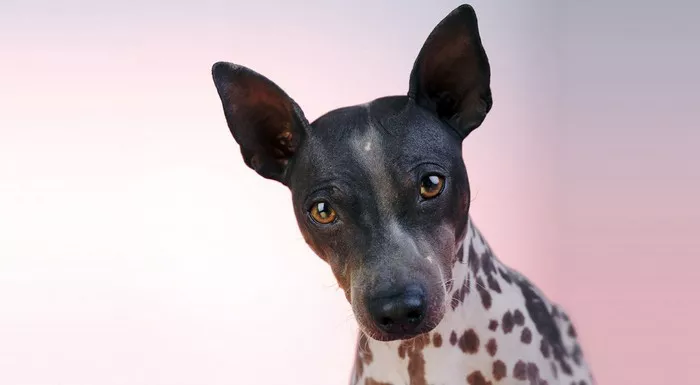Hairless dogs, also known as “naked” dogs, are a unique and interesting breed. While they may look very different from their furry counterparts, they require just as much care and attention. One question that many owners of hairless dogs have is whether or not they need to oil their dogs. In this article, we will explore the question of whether or not hairless dogs need to be oiled and provide tips for proper grooming and care.
Why Do People Oil Hairless Dogs?
Oiling hairless dogs is a common practice among some owners. The primary reason for oiling hairless dogs is to moisturize their skin. Without hair to protect their skin, hairless dogs are more susceptible to dryness and irritation. Oiling can help keep their skin hydrated and healthy.
Additionally, some owners believe that oiling can help prevent skin infections and promote a healthy coat. However, there is limited scientific evidence to support these claims.
Types of Oils for Hairless Dogs
There are several types of oils that can be used on hairless dogs. Here are some of the most common types of oils:
Coconut Oil: Coconut oil is a popular choice for hairless dogs because it is moisturizing and has antimicrobial properties.
Olive Oil: Olive oil is another moisturizing oil that can be used on hairless dogs. It is also rich in antioxidants, which can help promote healthy skin.
Jojoba Oil: Jojoba oil is a lightweight oil that is easily absorbed by the skin. It is also rich in vitamins and minerals that can help promote healthy skin.
Argan Oil: Argan oil is a rich, moisturizing oil that is high in antioxidants and fatty acids. It can help promote healthy skin and a shiny coat.
Vitamin E Oil: Vitamin E oil is a powerful antioxidant that can help protect the skin from damage. It is also moisturizing and can help promote healthy skin.
How to Oil Hairless Dogs
If you choose to oil your hairless dog, it is important to do so properly to avoid causing damage to their skin. Here are some tips for oiling hairless dogs:
Choose the Right Oil: Not all oils are created equal. Choose an oil that is safe for dogs and appropriate for their skin type.
Test on a Small Area: Before applying oil to your dog’s entire body, test it on a small area to make sure they don’t have an allergic reaction.
Apply Sparingly: Too much oil can cause the skin to become greasy and attract dirt and debris. Apply oil sparingly, focusing on areas that are particularly dry or prone to irritation.
Massage Gently: When applying oil, massage it into the skin gently to help it absorb.
Wipe Off Excess: After applying oil, wipe off any excess with a soft cloth to avoid attracting dirt and debris.
Other Tips for Grooming Hairless Dogs
In addition to oiling, hairless dogs require regular grooming to maintain the health of their skin and coat. Here are some tips for proper grooming of hairless dogs:
Bathing: Hairless dogs should be bathed regularly to remove dirt, debris, and oils from their skin. Use a gentle, hypoallergenic shampoo that is specifically formulated for dogs.
Brushing: Hairless dogs should be brushed regularly to remove dead skin cells and prevent skin irritation. Use a soft-bristled brush or a damp cloth to gently groom hairless dogs.
Nail Trimming: Hairless dogs may require more frequent nail trimming than their furry counterparts. Use a sharp pair of nail clippers to trim the dog’s nails.
Ear Cleaning: Hairless dogs may be more susceptible to ear infections than their furry counterparts. Clean the dog’s ears regularly with a gentle, hypoallergenic ear cleaner.
Teeth Brushing: Hairless dogs are more susceptible to dental problems, such as tooth decay and gum disease. Brush the dog’s teeth regularly with a soft-bristled toothbrush and toothpaste specifically designed for dogs.
Conclusion
Oiling hairless dogs can be a helpful way to moisturize their skin and promote a healthy coat. However, it is important to choose the right oil, apply it sparingly, and massage it in gently to avoid causing damage to their skin. Additionally, hairless dogs require regular grooming and care to maintain the health of their skin and coat. By following the tips outlined in this article, owners can help keep their hairless dogs healthy and happy.
It is important to note that while oiling hairless dogs can be beneficial, it is not necessary for all hairless dogs. Some hairless dogs may have naturally oily skin and may not require additional oiling. Additionally, some hairless dogs may have sensitive skin that can be irritated by oils. If you are unsure whether or not to oil your hairless dog, consult with a veterinarian or professional groomer.
In addition to proper grooming and care, hairless dogs also require a healthy diet, regular exercise, and routine veterinary check-ups. A balanced diet, regular exercise, and regular check-ups with a veterinarian can all help keep hairless dogs healthy and happy.
In conclusion, hairless dogs require regular grooming and care to maintain the health of their skin and coat. While oiling can be a helpful way to moisturize their skin, it is important to choose the right oil, apply it sparingly, and massage it in gently to avoid causing damage to their skin. By following the tips outlined in this article, owners can help keep their hairless dogs healthy and happy.


